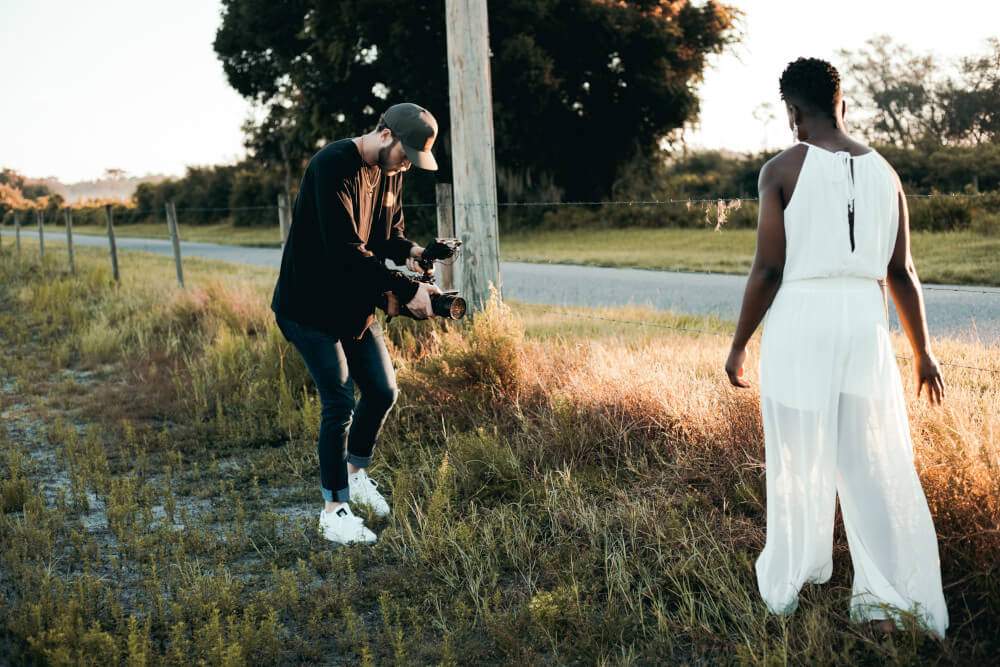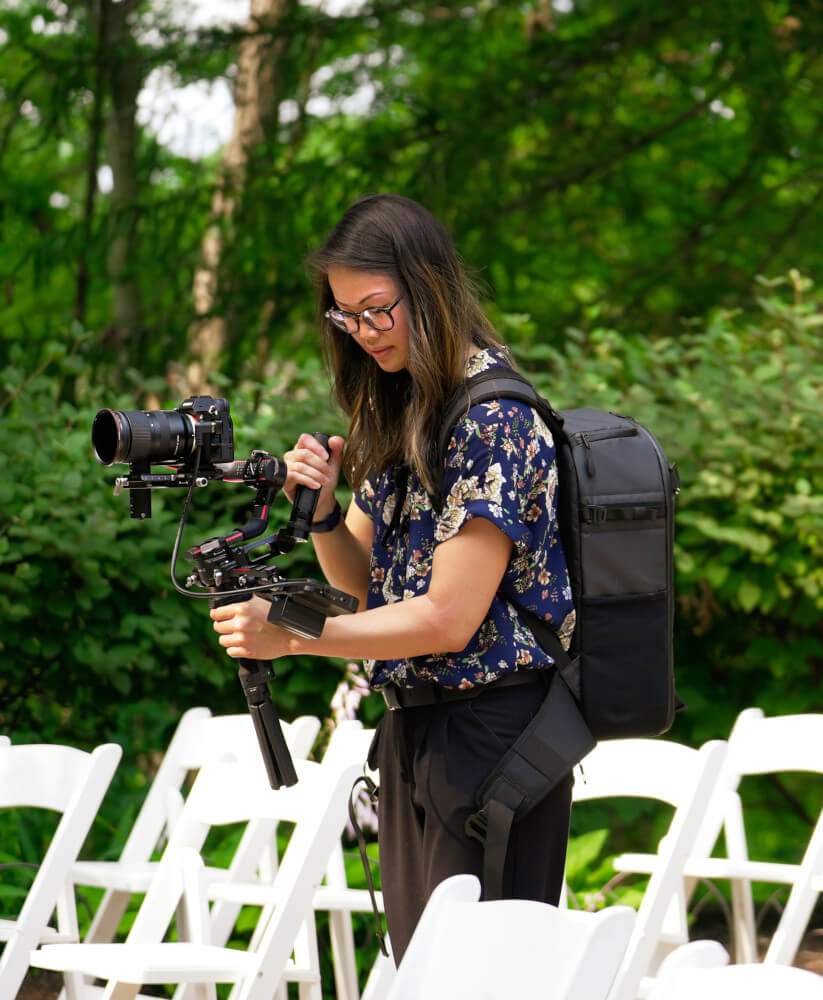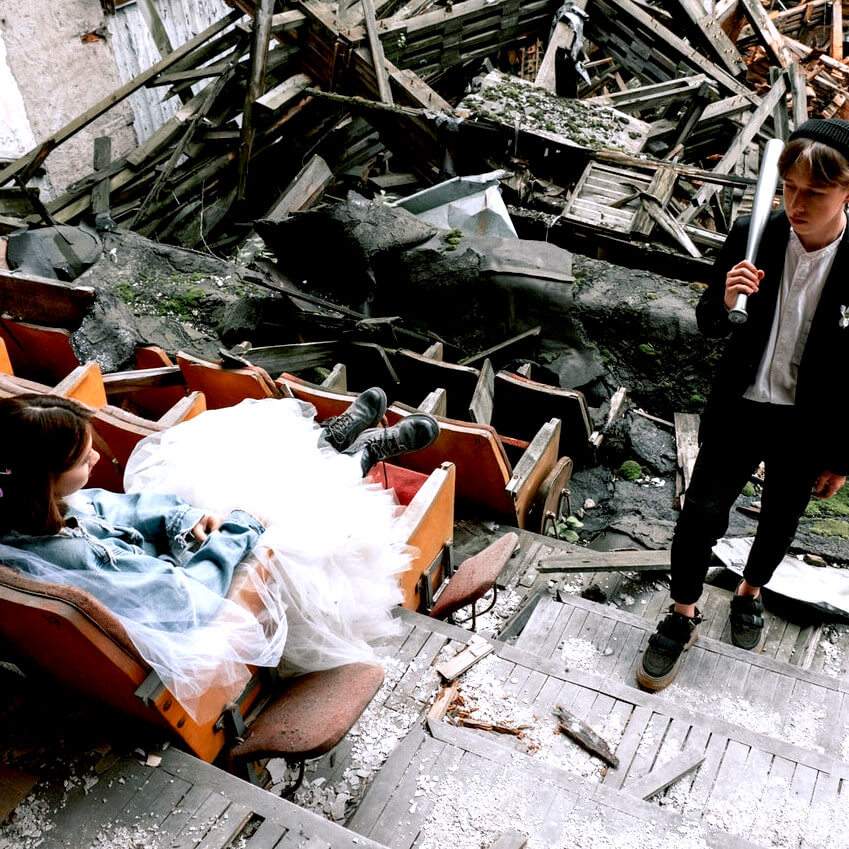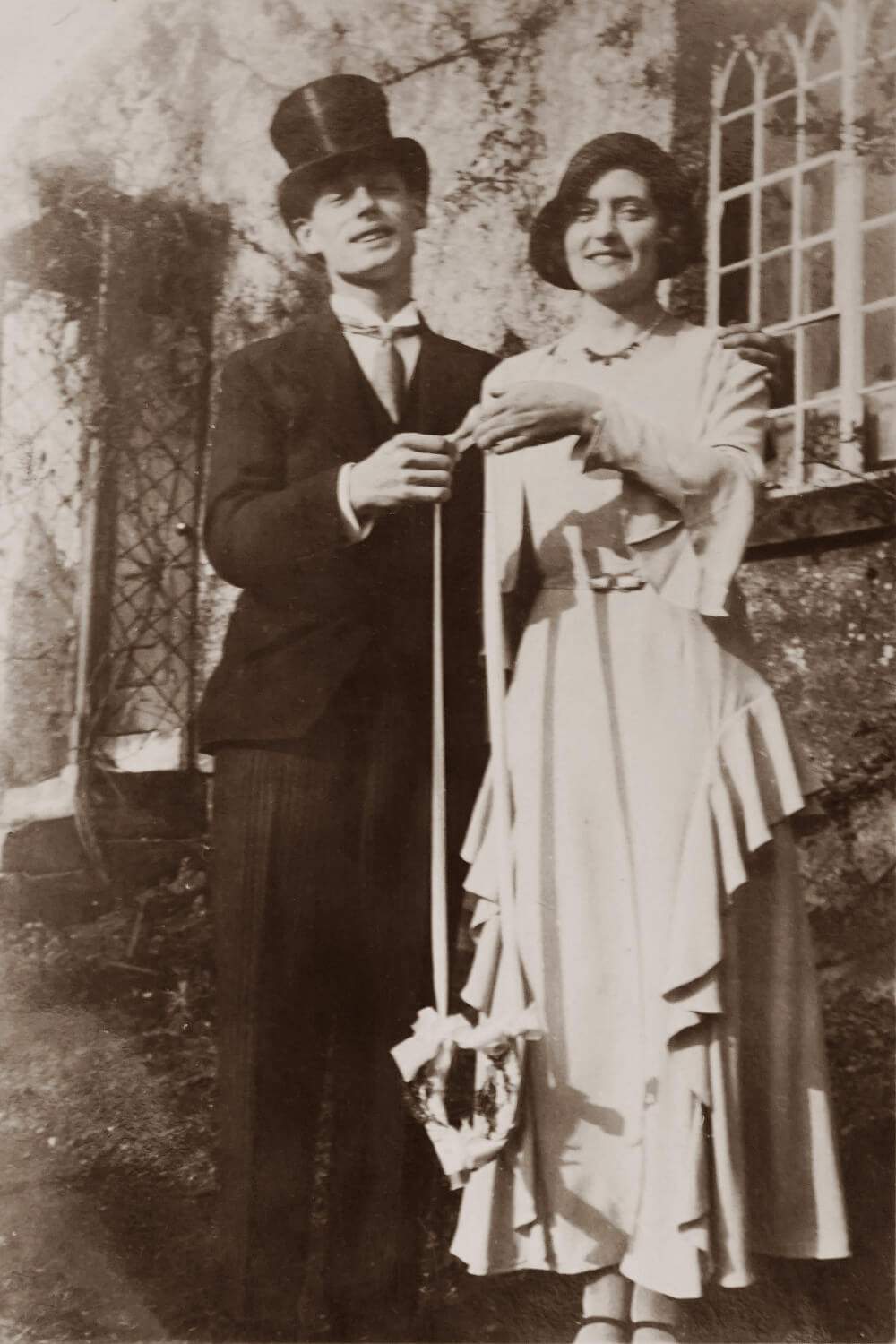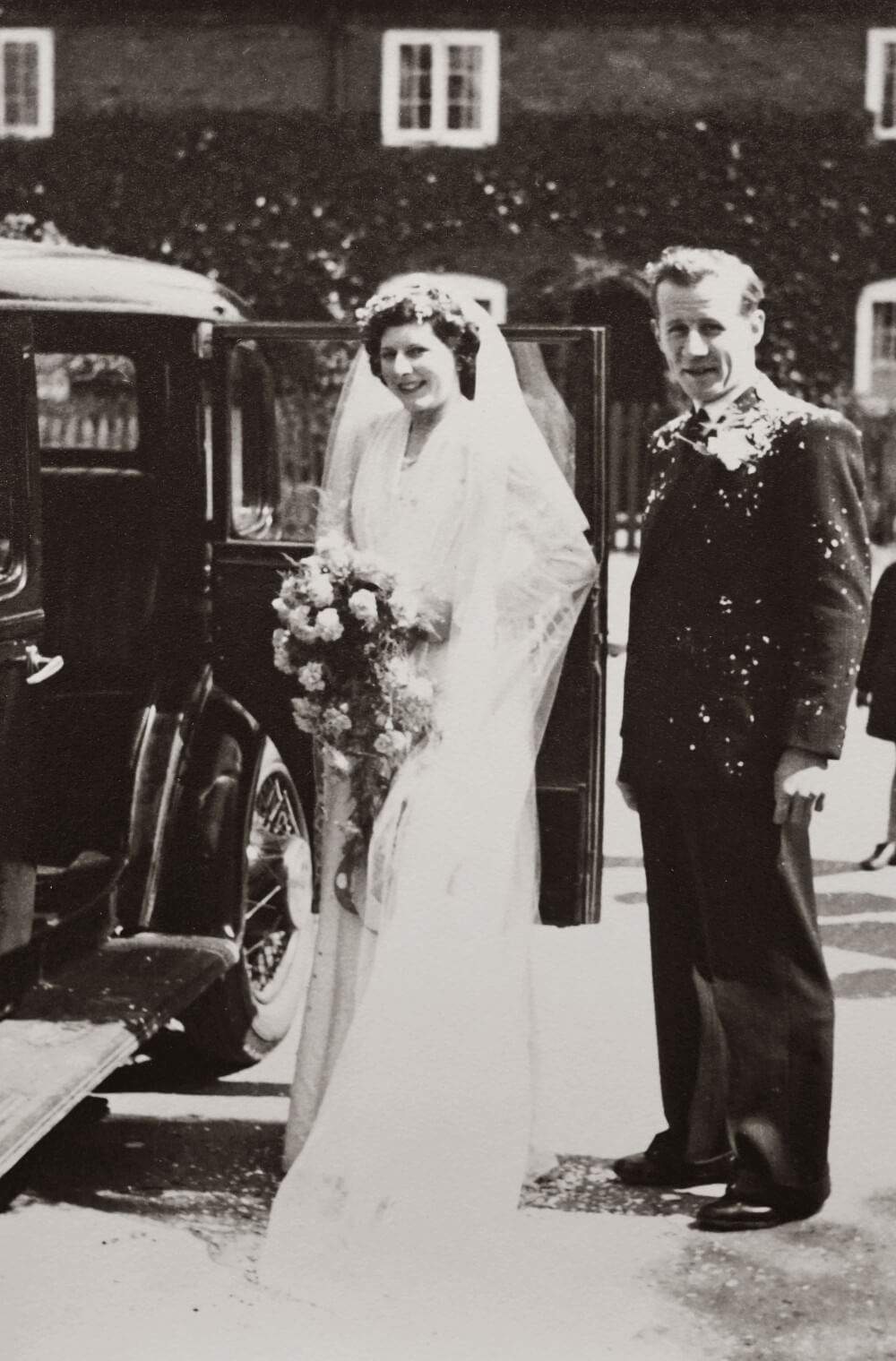History of Wedding Videos & Styles of Wedding Videography

As with the evolution of all video recording equipment, the popularity of wedding videos evolved in accordance with the most popular and affordable video equipment of the day. As new technologies became more portable and affordable, more couples got their weddings immortalised on film, tape and DVD. As technology moves on, a digital backup of your wedding video will become more and more precious – EachMoment’s digitisation service can help.
Styles for wedding videos have also moved with the times. Traditional linear recordings are transitioning into more cinematic and stylised wedding videos.
Wedding Video Trends Over the Years
Wedding Video Trends & Styles
Wedding videos have gotten increasingly cinematic as decades have passed. Affordable recording equipment and editing software allows wedding videographers to create a composition worthy of the big screen.
Traditional Wedding Videos – Whole Day
The most traditional form of wedding video is one that undergoes little to no editing and documents the entire day from start to finish. This kind of wedding video is less favourable today, as many couples opt for an edited version of the day.
Journalistic Wedding Videos
Journalistic style is probably the most recognisable and popular form of wedding video today. A Journalistic style wedding video usually consists of a linear collection of edited clips that document the entire day, from morning preparation to evening festivities, perhaps with some sound bites taken from guests or the couple to help tie the clips together. The cameraman in the journalistic style will usually stay on the sidelines as an unobtrusive observer of the event. This approach is more about the capturing the candid moments. The final product is likely to be more natural and less polished.
Cinematic Wedding Videos
In contrast, the Cinematic style of wedding video aims for a glossy aesthetic. If you go for the cinematic approach, it will likely require far more staging, with the videographer taking more control over what is captured. They will interact far more with the guests and the couple on the day, to direct moments like the scenes of a movie.
Cinematic wedding videos will employ a variety of editing techniques to heighten the visual dynamism and emphasise the emotions of the day. This can be achieved with the addition of music, slow motion, colour filters and many other techniques besides.
Experimental or Artistic Wedding Videos
For those with even more ambitious intentions for their wedding video, the Artistic approach can achieve something really unique. Couples with a strong interest in film may wish to collaborate with more artistic and experimental wedding videographers. You might want to work on a script in advance; create scenes and even use props. And in the editing, the videographer can make use of variety of techniques to create a truly personal wedding video that is also a work of art. A highly stylised wedding video will certainly make your day – and the video – memorable and personal to the couple.
A few ideas for experimental wedding videos:
- If you can’t find a wedding videographer who specialises in experimental film, why not try looking for independent filmmakers in your area?
- Retro filming techniques have cult popularity among film enthusiasts. The Super8 filmmaker can use more traditional kinds of film to produce something really unusual.
- Ever heard of a Marryoke video? Pronounced “marry-okey”, it combines karaoke, music video and wedding day. Videographers film guests miming and dancing to a particular song in snippets throughout the day and then all the clips are edited together to create a music video.
No matter the style you go for, the best wedding videographers are those that communicate with couples in advance and work sensitively on the day to produce the best wedding video the couple could even imagine. It is therefore incredibly important that you gel with the videographer. So having a chemistry meeting first before going on to have production meetings with your wedding videographer.
Did you know that your wedding video could even win an award? There are competitions and film awards dedicated to the art of the wedding video.
Changing Technologies and Wedding Videos
At the start of the 20th century, wedding videos were for the very privileged few. The costs of such an endeavour were astronomical and far out of reach for most engaged couples. Commercial film production came well before any domestic attempts at movie making.
Wedding Videos on Cine Film
When videographers were confined to the cine film format, films were limited in length and usually silent. Although some cine films were recorded with sound following the introduction of magnetic stripe and optical sound technologies, figuring out if a cine film has sound or not can be tricky.
Wedding videos produced on cine film were susceptible to all the familiar pitfalls of older cine film:
- Restricted Length: The diameter of the reel would determine how much time you could record. The most common size of cine film was 8mm film could record 4 minutes of footage up to a maximum of 90 minutes.
- Silent: Most cine film is silent. Although sound film technology became possible during the mid-20th century, it was rarely seen, expensive to produce and prone to faults.
- Poor Image Quality: Footage recorded on older cine film was grainy in appearance and tinted orange as a result of the Tungsten filter that Super8 cameras often used.
However, cine film wedding videos are seeing a resurgence. The retro look of Super 8 and 16mm film is gaining popularity. The slightly rose-tinted appearance of cine film footage creates a timeless and romantic feel.
Wedding Videos on Tape
Camcorders became the new guy in town for wedding videos in the 1980s, when Sony released the first consumer camcorder. A variety of cassette tapes joined the market around this time too. Married couples and their families commonly have a legacy of tapes left behind from a lifetime of recording weddings, christening and anniversaries. With the frantic rise and fall of VHS, Betamax, Mini DV, Betacam, Digital8 and Hi8 tapes (to name but a few!), the obsoletion of their respective players makes playback difficult. Consider getting your wedding videos digitised, EachMoment digitises all kinds of tapes.
The downside of wedding videos on tape is their obsolescence and susceptibility to damage. Domestic VCRs are hard to come by these days and even one that’s in good working order can take a pristine VHS tape and turn it to mush. We all know the dreaded whizz and gurgle of a VHS under attack as reams of tape rapidly unfurl within the player.
For those with wedding videos recorded on VHS (or video tape) but fear the destructive capability of a second-hand VCR, playing back their special day is fraught with difficulty.
Digitising VHS tapes is the best way of preserving the recording and achieving a conscious-free playback session.
Wedding Videos on DVD
As the century turned again and the 21st century began, the use of tapes declined as digital cameras made way for DVDs. Digital filming is a far superior choice for wedding videographers due to the economy of space (a digital memory card can hold hundreds of hours of footage) and the ease of digital editing.
DSLRs and digital camcorders are the favourite choices for wedding video makers today. But the DVD format is falling from grace. As quickly as DVDs arrived on the scene, they are disappearing almost as quickly.
DVD players are already a thing of the past and are no longer commonplace in the average household. DVDs and Blu-ray discs can be played on some games consoles (e.g. Xbox One, PlayStation4) and on a desktop computer if it has a disc drive.
And even if you find a way of playing your wedding DVD, you might find the disc damaged and unwatchable. The slightest scratch can throw off the laser scanning and files can become corrupted.
The best way to avoid the eventual total obsolescence of the DVD is to create a fully digital backup. Digitising DVDs is easy with EachMoment’s conversion service.

